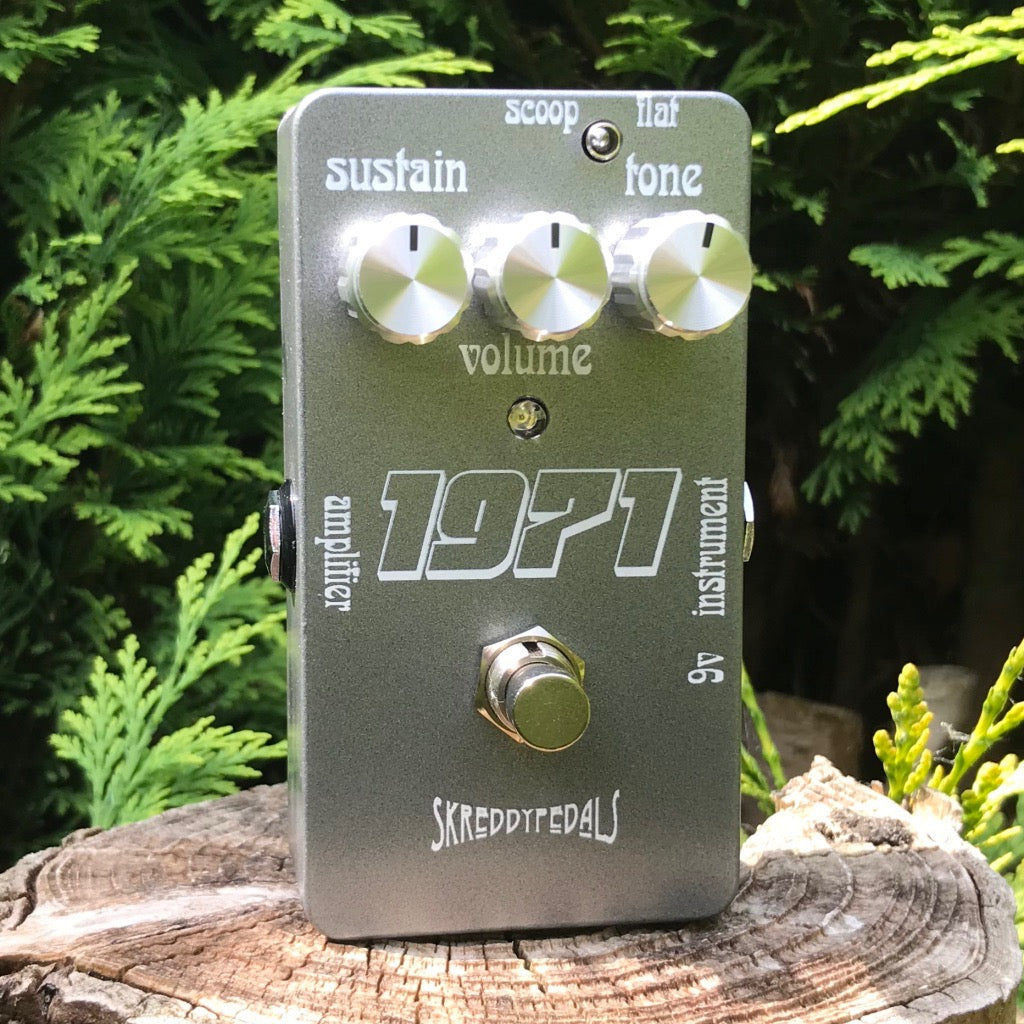Effects: Big Muff, Fuzz
Classic triangle-knob BMP style pedal that leans more toward the "overdrive" side than the "fuzz" side
Meaty, aggressive, tight, smooth, sustaining, cutting, warm--it packs all these characteristics together because it is so well balanced and ready for anything. Retains the "stringiness" of your attack rather than swamping it out. Your chords will have great string separation even though there's no lack of gain.
The Skreddy 1971 has that old-school charm because it's made from oldschool parts!
In 1971, Mike Matthews' Big Muff Pi sparked a revolution in fuzz. Thick, creamy, and sustaining, but well-behaved and more amp-like rather than buzzy.
The Skreddy 1971 pedal combines the same elements of the early "triangle knob" BMP, like carbon comp resistors, ceramic capacitors, and 2N5133* transistors, into a design that has its gain pulled back just a bit. This allows the distortion to retain a balance of tightness and openness and an even more amp-like feel as opposed to an overwhelming liquid fuzz character.
The effect is positively addictive! And hard to classify exactly. It's not an all-out fuzz so much as a distortion reminiscent of a cranked Laney or Mesa Boogie with plenty of sustain and a very chord-friendly gain structure.
Meaty, aggressive, tight, smooth, sustaining, cutting, warm--it packs all these characteristics together because it is so well balanced and ready for anything. Retains the "stringiness" of your attack rather than swamping it out. Your chords will have great string separation even though there's no lack of gain.
The Skreddy 1971 has that old-school charm because it's made from oldschool parts!
In 1971, Mike Matthews' Big Muff Pi sparked a revolution in fuzz. Thick, creamy, and sustaining, but well-behaved and more amp-like rather than buzzy.
The Skreddy 1971 pedal combines the same elements of the early "triangle knob" BMP, like carbon comp resistors, ceramic capacitors, and 2N5133* transistors, into a design that has its gain pulled back just a bit. This allows the distortion to retain a balance of tightness and openness and an even more amp-like feel as opposed to an overwhelming liquid fuzz character.
The effect is positively addictive! And hard to classify exactly. It's not an all-out fuzz so much as a distortion reminiscent of a cranked Laney or Mesa Boogie with plenty of sustain and a very chord-friendly gain structure.





